Texas is located on the major migration flyway and 268,597 square miles of different ecosystems, including coastal islands and estuaries, deserts, plains, prairies, plateaus, subtropical zones, and more. Texas is home to a massive 659 species of birds, more than any other state (except California).
Birders can find migratory species passing through the area on their yearly migration, coastal species surviving off the rich Gulf ecosystems, unusual desert birds hiding in the Chisos Mountains of West Texas, and grassland species populating the plains. However, planning a birding vacation to the Lone Star State can be intimidating, given the abundance of birds and sites available. Whether you are from Texas or just visiting, below, we’ve curated a list of the most incredible birds in Texas you shouldn’t miss.
15 Most Incredible Birds in Texas
1. Sandhill Crane
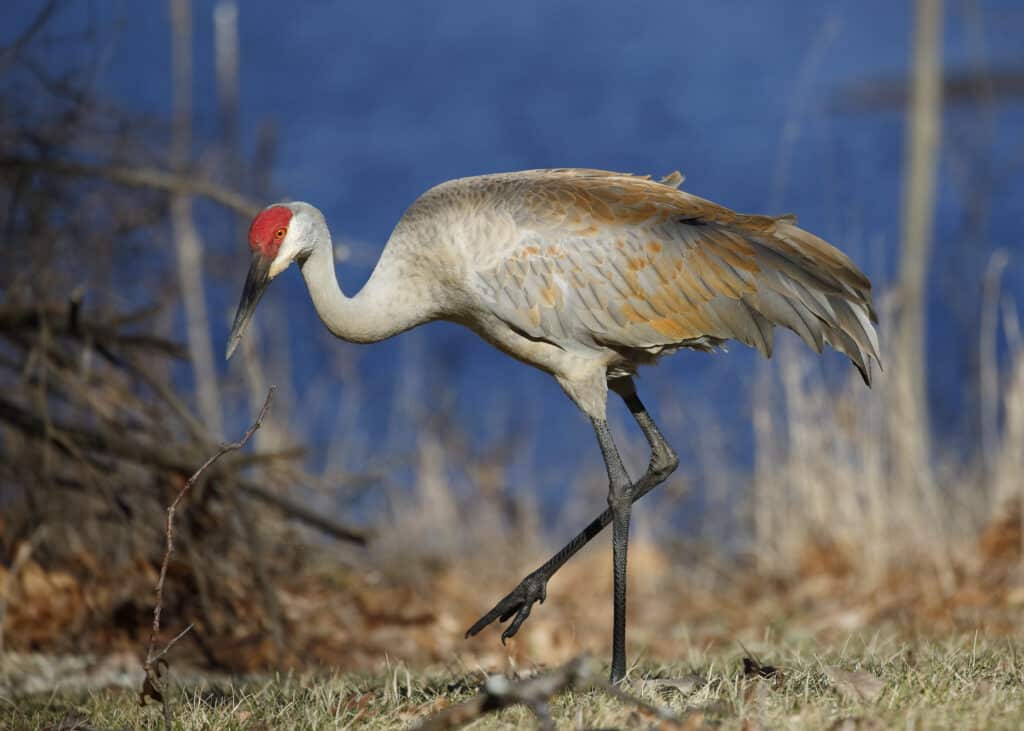
Sandhill cranes particularly congregate along the Gulf Coast.
©Brian Lasenby/Shutterstock.com
Often seen between November and March, sandhill cranes are found statewide but particularly congregate along the Gulf Coast and in the Panhandle. With ancestors that date back more than 2.5 million years, the sandhill crane is one of the oldest bird species on Earth. They engage in complex courtship dances that strengthen their bonds. Sandhill cranes are magnificent birds living in freshwater marshes, wetlands, and other places with standing water and a lot of vegetation.
One of the most magnificent sights in marshlands is witnessing a large confluence of cranes converging in a single river basin to rest, eat, and move. They are omnivores, meaning they consume a wide range of foods, including plants, seeds, nuts, grains, roots, cereals, fruits, insects, snails, snakes, lizards, frogs, fish, rodents, and other birds.
2. Swallow-tailed Kite
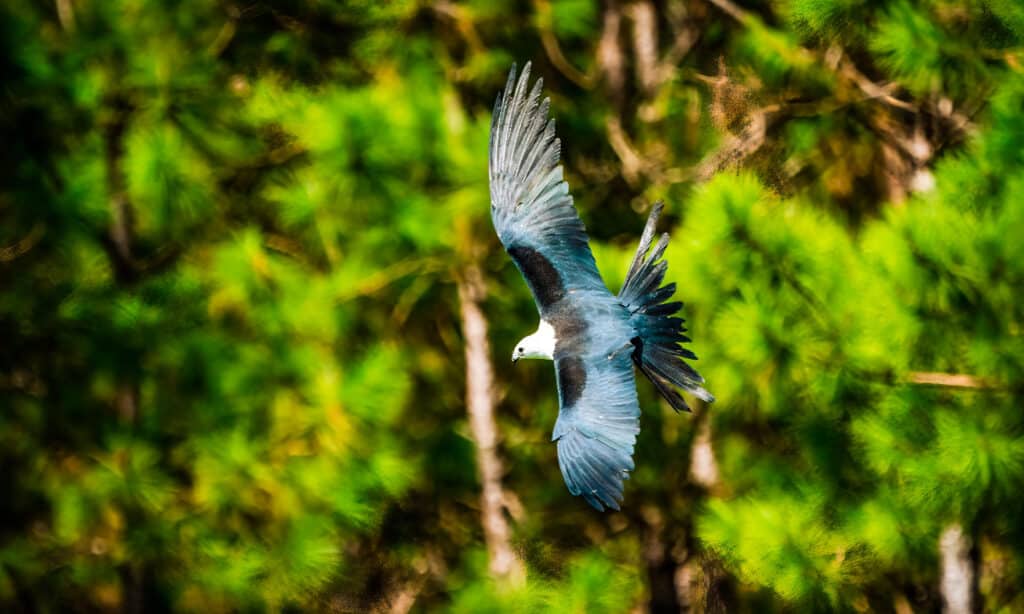
With the way they soar, swallow-tailed kites make flying seem simple.
©Wirestock Creators/Shutterstock.com
The way this Southeast Texas nester flies is beautiful. Imagine a plain, black-and-white bird soaring with grace and ease against an intense blue sky. They certainly make flying seem simple. Look to the skies in the spring or summer, where the southern Pineywoods meet the coastal grasslands, to spot one. The majority of them live there.
3. Red-headed Woodpecker

The red-headed woodpecker is one of 15 species of woodpecker in Texas.
©vagabond54/Shutterstock.com
Texas is home to more than 15 species of woodpeckers, but this one stands out for its hue and sass. Think of the clear, distinct colors of black, white, and red. This bird may serve as the spokesperson for washing powder as its colors “never fade, never run.” Other birds will move aside if a red-headed woodpecker visits your seed feeder; they may be scared off by the woodpecker’s black and white suit, blazing red hood, and strong beak.
4. Hooded Merganser
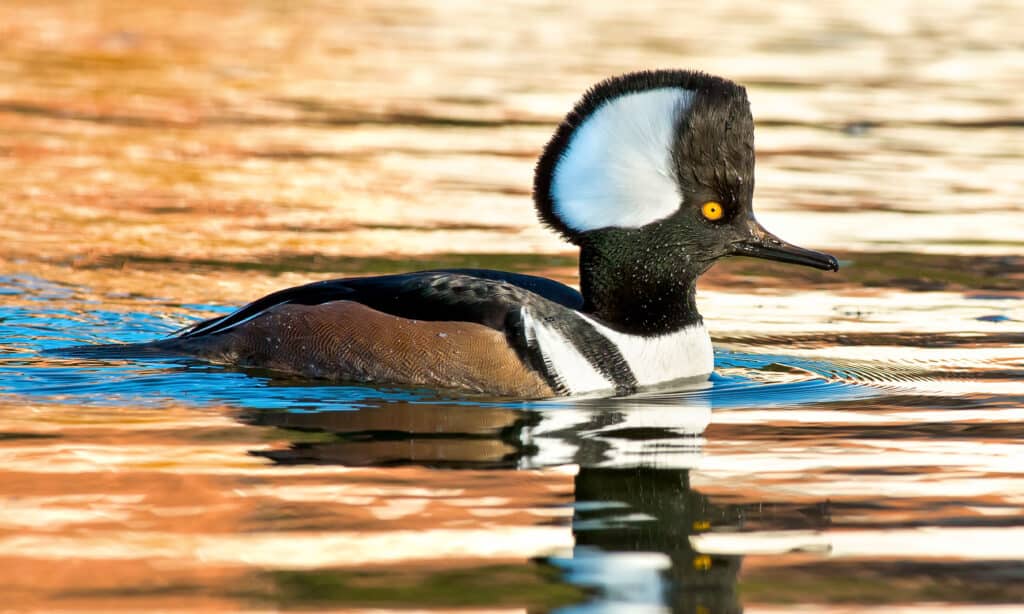
Mergansers can catch and retain their greasy food before ingesting it, thanks to their bill’s serrations.
©Paul Reeves Photography/Shutterstock.com
The hooded merganser and its two merganser cousins are the only waterfowl in Texas that enjoy eating fish. The Texan bird lacks the lovely greens and blues that other lovely ducks have. It’s a plain black and white bird with cinnamon-colored sides, but the male’s round, all-white crown steals the show. A male can flare that crest to amaze any audience when he is upset or excited. Mergansers can catch and retain their greasy food before ingesting it, thanks to their bill’s serrations.
5. Black-capped Vireo

Black-capped vireos spend the winter on Mexico’s western coast.
©iStock.com/AGAMI stock
Getting a complete view of a black-capped vireo is challenging. These bashful birds like to bounce around in the bushes in search of concealed insects rather than sit in the open for an extended period. From April to July, black-capped vireos breed in Texas. They spend the winter on Mexico’s western coast. For black-capped vireos, rangelands with sporadic shrub clumps divided by open grassland are their favored habitat. The Edwards Plateau and eastern Trans-Pecos regions of Texas are home to them.
6. Purple Gallinule
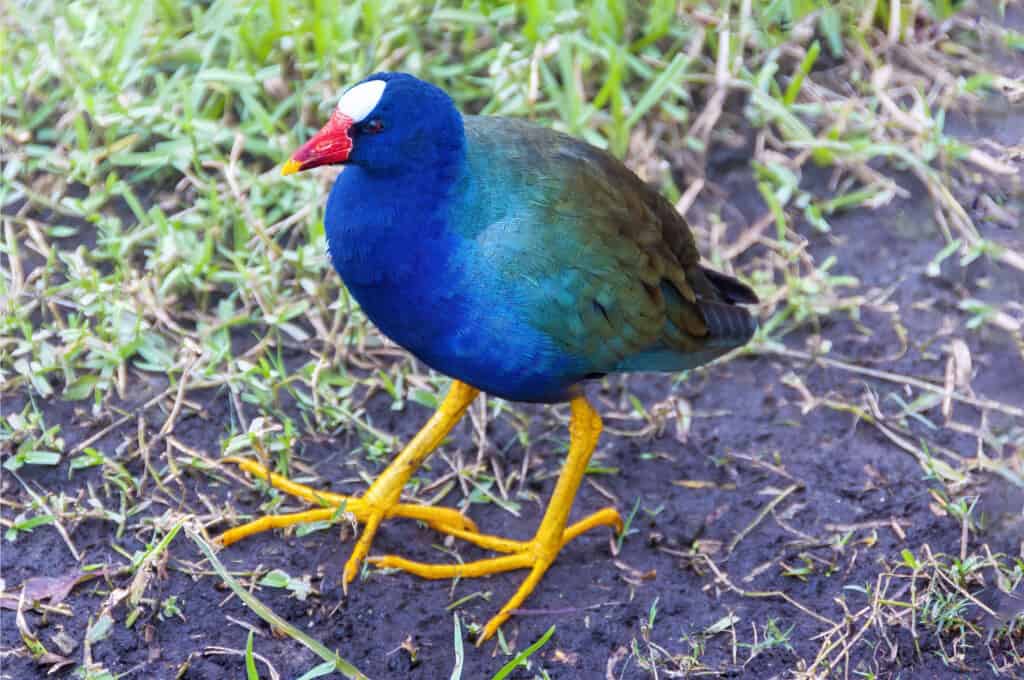
The purple gallinule can nearly walk on water.
©iStock.com/barbaraaaa
In addition to being stunning, the purple gallinule can nearly walk on water. This wetland creature appears to walk on water as it strides through lily pads and other floating aquatic vegetation on strong, thick feet with long toes. In the eastern half of Texas, where they arrive between early April and late May, they are rare spring and fall migrants. The small tail of the bird is frequently cocked and flicked, exposing a dazzling white patch underneath.
7. Rufous Hummingbird
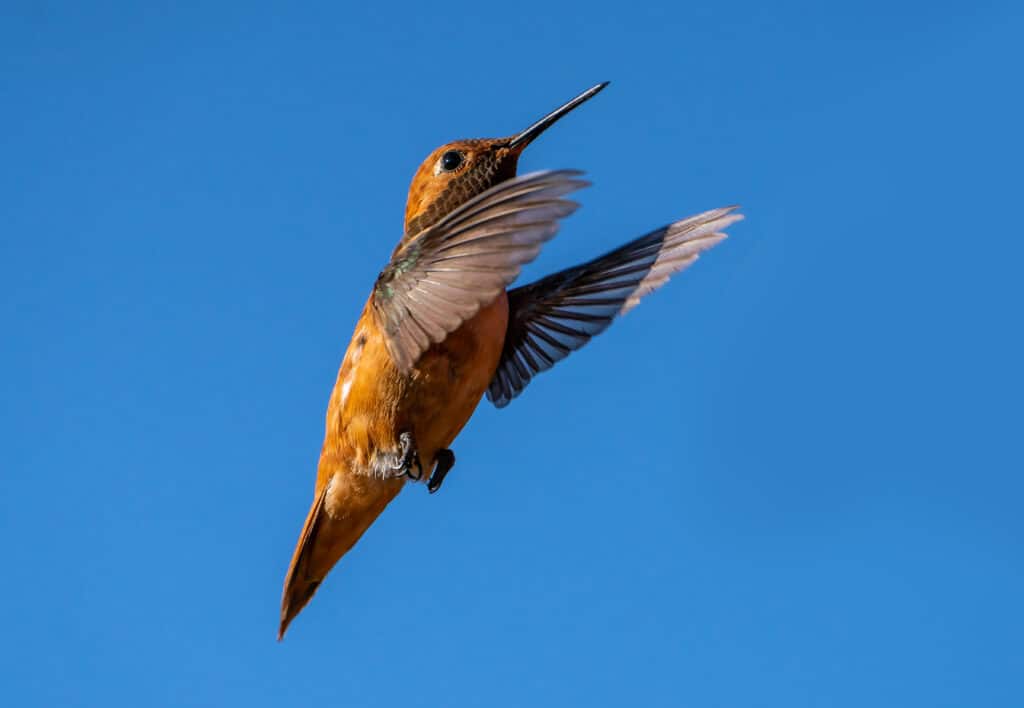
The annual migration of the rufous hummingbird through Texas offers an exciting chance to observe hummingbird interactions.
©iStock.com/Darryl Saffer
If a hummingbird feeder is correctly maintained, the lucky backyard nature enthusiast might get to keep a swift-flying rufous hummingbird as a prize. Most Texas sightings occur in the cooler months when we don’t anticipate seeing hummingbirds. The annual migration of the rufous hummingbird through Texas offers an exciting chance to observe hummingbird interactions. Rufous hummingbirds breed from southern Alaska to Alberta, British Columbia, Washington, Idaho, and western Montana to Oregon.
8. Violet-green Swallow

Violet-green swallows are found along the west coast from Alaska to Mexico.
©iStock.com/spates
Many dark Texas birds’ feather colors are enhanced and varied by iridescence. Nothing rivals the violet-green swallow in a favorable light because of the contrast between its green-purple topside feathers and snow-white underside. In a creek or canyon in West Texas, iridescence offers the spectator an amazing rainbow of colors. A little member of the swallow family that lives in North America, these aerial insectivores are found along the west coast from Alaska to Mexico and as far east as Texas and Montana.
9. Le Conte’s Sparrow
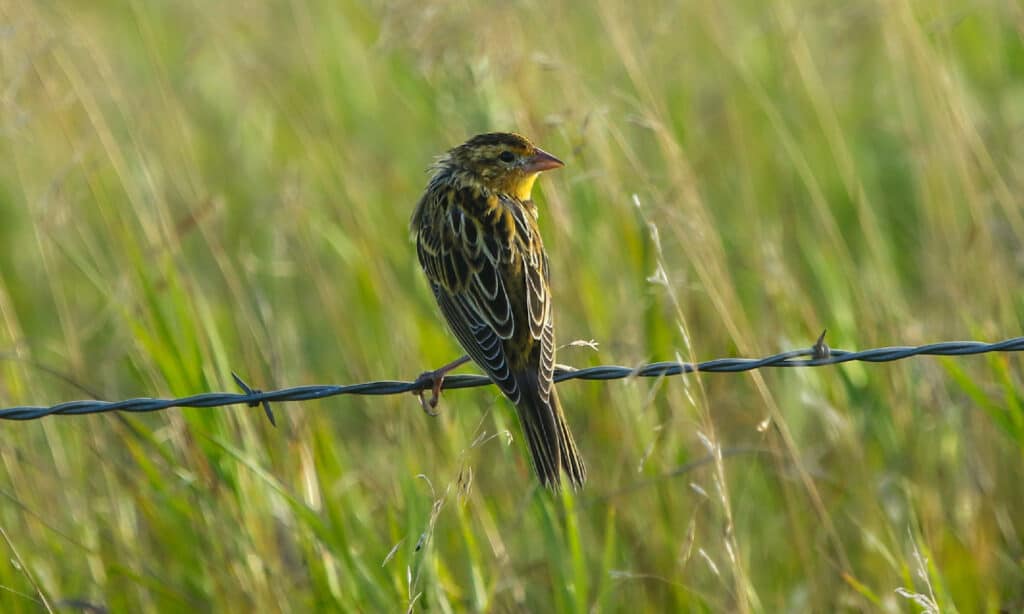
Le Conte’s Sparrows eat the seeds of grasses and a few insects.
©vagabond54/Shutterstock.com
These Georgian winter dwellers of native warm-season grasses are difficult to notice until they finally flush. They bear the name of a physician and naturalist. They live in areas with various grasses and wildflowers in Texas and are rather elusive. Le Conte’s Sparrows eat the seeds of grasses and a few insects.
10. Prothonotary Warbler
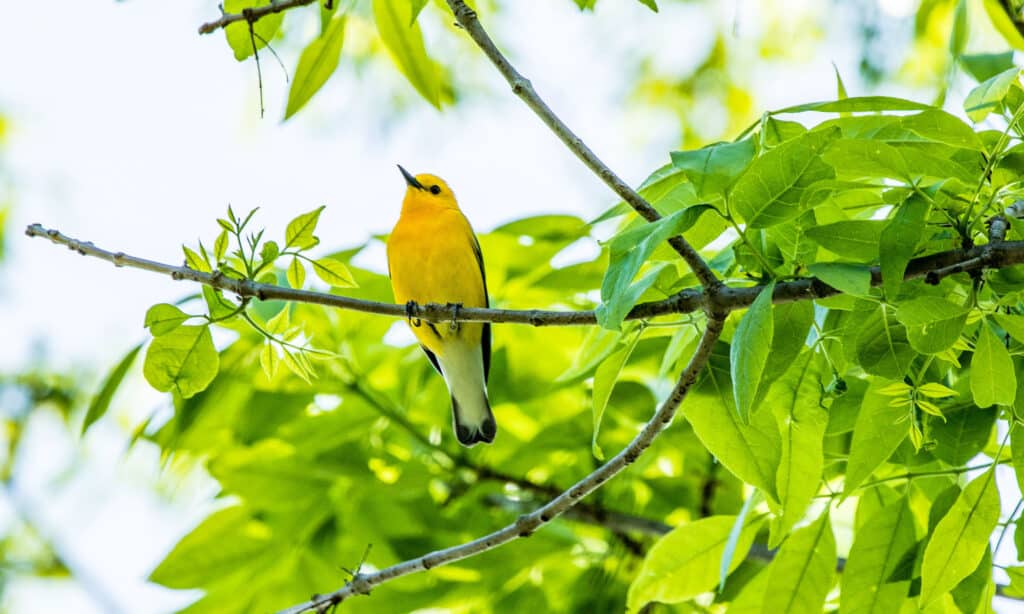
The prothonotary warbler is the emblematic breeding warbler of the eastern United States’ wooded bayous and bottomlands.
©Mark C. Morris/Shutterstock.com
The two cavity-nesting warblers in the United States are the prothonotary warbler and Lucy’s warbler. One quaint name for this little songbird of East Texas’ hardwood forests and marshes is “Golden swamp fire.” The prothonotary warbler is the emblematic breeding warbler of the eastern United States’ wooded bayous, bottomlands, swamplands, creeks, and rivers, including those sites in the eastern half of Texas. When they come in the spring, they not only spray the dark river bottoms with a vivid yellow color but also announce their breeding territory with a booming song. The birds occasionally enter the house and build a nest in a coffee can or an old boot in the closet.
11. Scissor-tailed Flycatcher

The scissor-tailed flycatcher breeds in semi-open terrains.
©iStock.com/WMarissen
Semi-open terrain, including prairies, plains, farms, ranches, and clearings, are where scissor-tailed flycatchers breed in Texas. Apart from being Oklahoma‘s official state bird, South Carolina also wisely switched from the Carolina wren when many states (including Texas) chose the northern mockingbird for state honors. Enormous scissortail flocks can occur during the fall migration, often in urban areas, and these flocks can contain thousands of birds. It is undoubtedly a magnificent sight (and loud sound) to behold against the backdrop of the setting sun.
12. Montezuma Quail
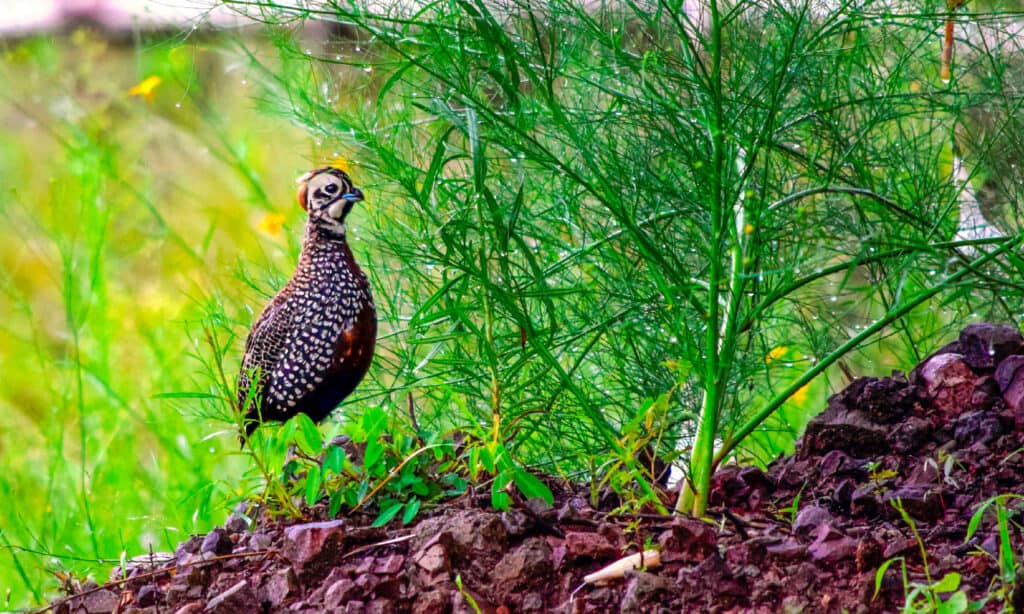
The Montezuma quail burrows through the soil surface in quest of edible roots and tubers.
©Ronny Wolf/Shutterstock.com
The Montezuma quail inhabits West Texas’ hills and mountains and the southern Edwards Plateau in Texas. They have largely been researched in West Texas, Mexico, and Arizona. The male Montezuma quail, sometimes known as the “fool’s quail,” is an incredible sight. This attractive bird prefers the native grasses on rocky hillsides in the West. The water-drip and bird-feeding station in Davis Mountains State Park is the best location in Texas to witness this “lifer.” This bird burrows through the soil surface in quest of edible roots and tubers. It was once widespread throughout most of the Hill Country, far east of its present range.
13. Tricolored Heron

The tricolored heron is a frequent coastal resident who prefers estuarine breeding settings.
©iStock.com/Christina Stover
Along the Texas coast, tricolored herons are common. In small to big colonies, they breed with other colonial waterbirds. The tricolored heron is a frequent coastal resident who prefers estuarine breeding settings, including river deltas, salt marshes, lagoons, mangrove swamps, and salinas. However, it can also be found in freshwater locations. Due to the wide variety of foraging habitats, the tricolored heron can change foraging activities by utilizing either flock or solo foraging techniques.
14. Violet-Crowned Hummingbird
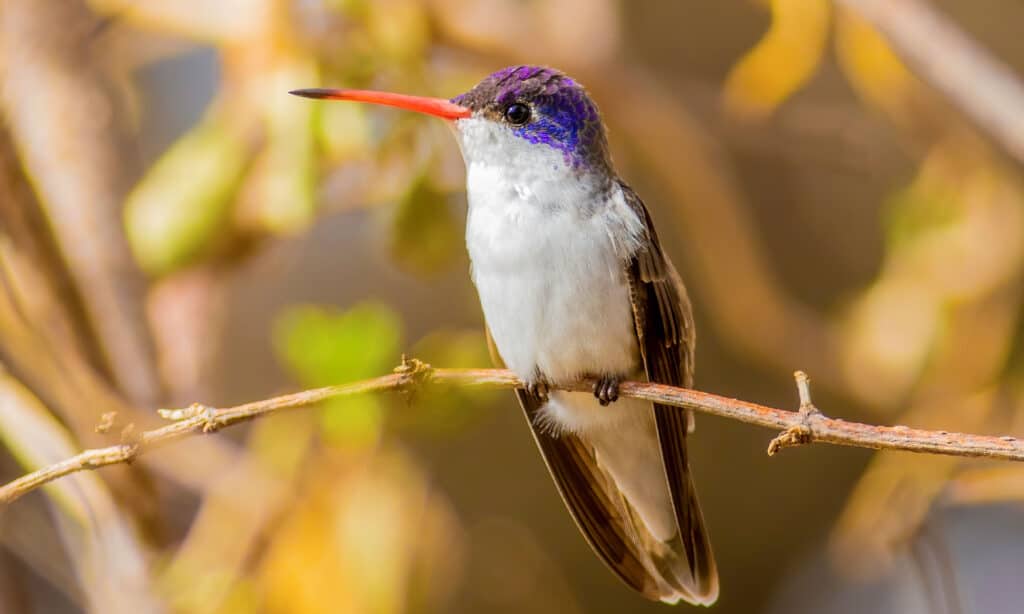
The violet-crowned hummingbird occasionally migrates from southwest Texas to southernmost California outside its breeding territory.
©Matthew Jolley/Shutterstock.com
Not until 1959 was this large hummingbird discovered breeding in the United States. It is typically a mountain species, and its breeding habitat is in the desert scrub of southeast Arizona to southwestern Mexico. It occasionally migrates from southwest Texas to southernmost California outside its breeding territory. The violet-crowned hummingbird can be seen flying around or hovering amid tall trees where there aren’t many flowers, collecting little insects in flight.
15. Green Jay

The Green Jay is frequently seen in riparian settings and prefers locations with heavy brush and dense forest.
©iStock.com/Wildnerdpix
The Green Jay, often referred to as Rio Grande Jay locally, is a vividly colorful tropical species with a range that reaches the far southernmost part of Texas. The Green Jay is a unique treat for visitors to the Rio Grande valley due to its small range in the United States, raucous attitude, and vivid green, yellow, black, and blue plumage. The Green Jay is frequently seen in riparian settings and prefers locations with heavy brush and dense forest. West-central Mexico to northern Honduras is the region in Central America with the largest Green Jay population.
The photo featured at the top of this post is © iStock.com/Christina Stover
Thank you for reading! Have some feedback for us? Contact the AZ Animals editorial team.






